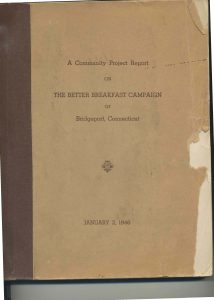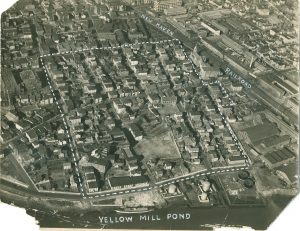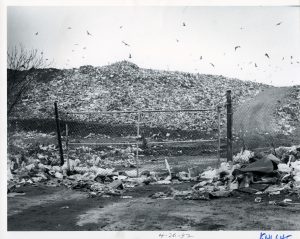Bridgeport’s Better Breakfast Program

by Brittney Murphy
When the United States entered World War II in 1941, the nation embraced for total mobilization. In addition to marshaling military resources, the federal government enlisted the cooperation of civilians, businesses, the media, and local governments to assist in the war effort. (more…)
Father Panik Village: the Place Where Dreams Refused to Die

By Britney Murphy
On December 22, 1939, Father Stephen J. Panik, proudly addressed the audience attending the groundbreaking ceremony for Bridgeport’s first public housing project. The erection of what would become Yellow Mill Village was the culmination of years of hard work on the part of Father Panik, city and state officials, and Bridgeport residents.[1] Father Panik considered the Village to be, “perhaps the greatest Christmas gift that ever was given to the people of Bridgeport, –not a promise, but the beginning of a reality, fine, decent homes for about 5,000 people.”[2] (more…)
Mount Trashmore

On December 20, 1991, representatives from the Coalition to Rebuild Bridgeport loaded a pickup truck with trash and drove to the Connecticut state capitol. Once there they delivered a letter to Governor Lowell Weicker demanding that he use Connecticut’s Emergency Spill Response Fund to remove Connecticut’s largest illegal dump. This audacious act of defiance was in reaction to the perceived indifference of government officials to the plight those forced to live in proximity to the dump, which Bridgeport residents had dubbed Mount Trashmore. Exacerbating the situation was Trashmore’s location within the predominantly nonwhite East End neighborhood. To many residents, it was a clear example of racism. The trip to the capital was one aspect of a multifaceted campaign launched, from the summer of 1991 to 1993, to facilitate Trashmore’s removal. (more…)
